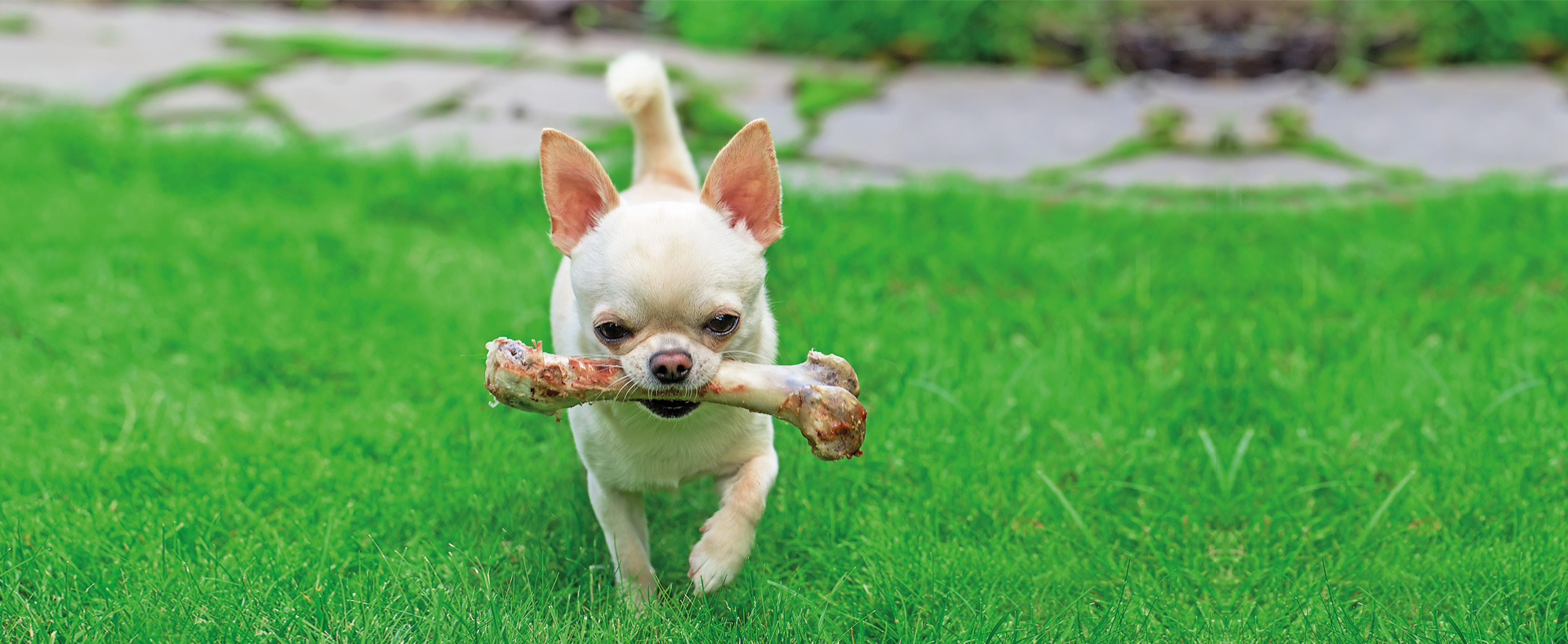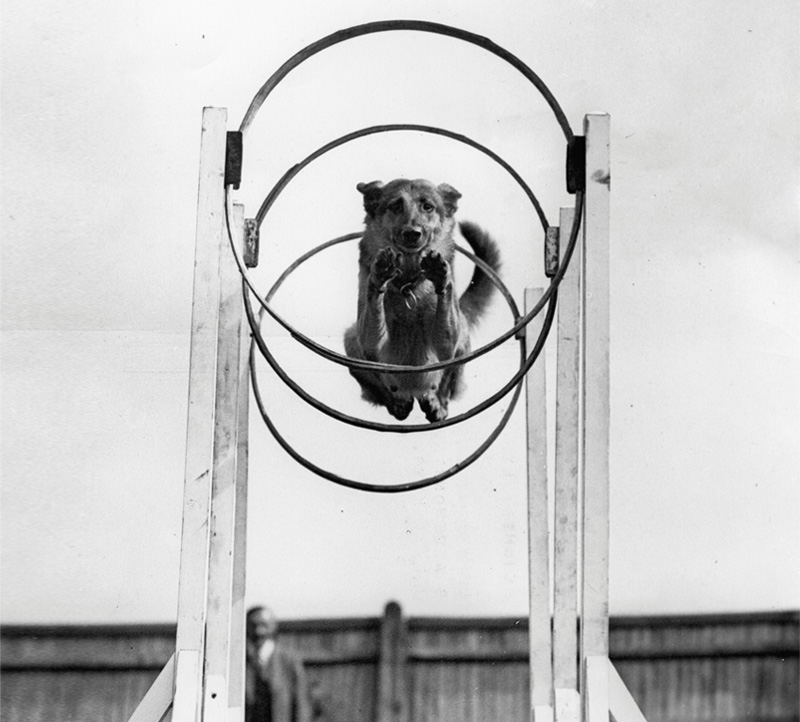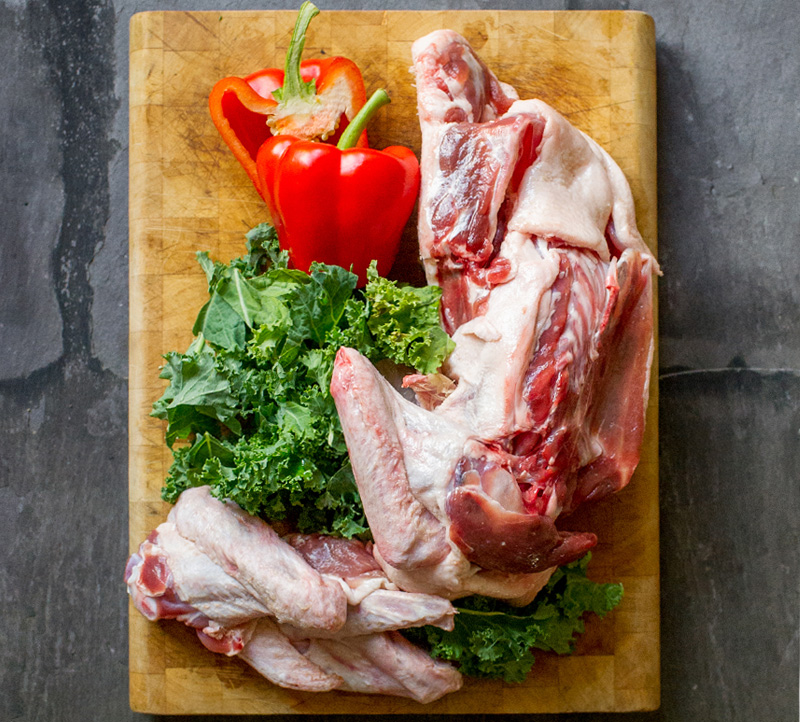The benefits of feeding a raw bone are legion, including nutrition, better oral health, exercise and entertainment.
But it is important to avoid any, ahem, funny bones and to stick to the rules described here.
If you are in any doubt please don’t hesitate to contact us at Honey’s HQ.
Give a dog a bone
In the wild, providing they have a choice, all animals eat what is best for them.
For dogs this means small prey or, if hunting in a pack, a share of larger prey.
They are thrifty, too.
Nothing is wasted and that includes the bones.
Initially, these are ripped, torn, chewed and sucked to remove all the meat and marrow. Then they are gnawed, crunched and (if small enough) eaten whole.
There has been some fantastically interesting (if gory) research in Australia proving this, in which scientists studied the insides of hundreds of wild dogs (don’t even ask).
One study was by a chap called S. J. O. Whitehouse (Australian Wildlife Research magazine, 1977, 4(2): 145–50); another, by a chap called A. E. Newsome (Australian Wildlife Research magazine, 1983, 10(3): 477–86).
Hundreds of dogs were examined across a wide geographical area.
The results were conclusive not only on the bone issue, by the way, but also on other dietary preferences.
No wild dog, for example, ever eats grain.
(Note there is more research available on the same topic, including detailed studies by Neville Buck, who studied a wide range of dogs and wolves at Howletts and Port Lympne Wild Animal Parks in the UK.)
It has also been shown that chewing bones releases endorphins, which is presumably why doing so will make your dog so happy!
Packed full of vital nutrients
It is easy to understand why the dog wants the meat and marrow, but what makes the bone itself so desirable?
The answer is that bones contain a huge number of nutrients that are vital to your dog’s health.
These include:
- minerals, including calcium, magnesium and phosphorous
- protein-containing essential amino acids, including lysine
- essential fatty acids
- fat-soluble vitamins (A, D and E)
- blood-forming nutrients (these are in the marrow), including copper and iron.
Keep your dog’s teeth and gums healthy
Meaty bones are nature’s toothbrushes. They keep your dog’s teeth clean and gums healthy.
Plaque can’t build up and decay is prevented.
As a result your dog shouldn’t develop any of the nasty oral diseases to which many of those on processed food are prone.
It will also mean he or she has sweeter breath.
You may be interested to know that a growing number of vets believe that there is a close connection between oral health and general health.
One veterinary dentist who has studied this is Dr Gary Beard, who is based at Auburn University in Alabama.
As long ago as 1991, he wrote a paper pointing out that heart failure, hepatic compromise, renal failure and other serious diseases in dogs could be a direct result of poor oral hygiene.
The same year another US vet, Dr Richard Hamlin, of Ohio State University, proposed that diseases of the heart, liver and lungs could be caused this way.
Provide great exercise, and help with mental health
Two further benefits should be mentioned:
- They provide your dog with exercise, strengthening their jaws and upper body.
- They keep your dog occupied. Dogs that have a bone to chew are happier and calmer.
Keep it raw
Bones must always be raw.
Heat changes the chemical compounds in bone, making it brittle and indigestible, and therefore more liable to splinter and cause gut issues.
Cooked bone should never, ever be given to a dog.
Keep watch
Dogs should be supervised when they have a bone – particularly the first few times they have one.
When giving bones limit their time at first to 20-30 minutes, you can re offer the bone a couple of days later.
This stops the dog taking in too much bone at once.
Incidentally, some dogs like bones so much that they can become a little possessive, especially if guarding behaviour is something that has already proved an issue.
In this situation, you may wish to stick to chicken wings and other soft bones that they will chew and swallow in a single sitting.
Another approach is to keep bone sessions short.
Be marrow minded
Marrow bones (yum, yum) are licking/ chewing bones and not eating/swallowing bones.
Why?
Because they come from weight bearing animal bone – usually beef.
They are not suitable for dogs who are what might be described as ‘focussed chewers’, as there is an increased risk of fracturing a tooth with this harder bone.
Bone marrow is quite high in fat, so if a dog is not used to a bone and has sensitive digestion, some may have a slightly upset stomach if they are allowed to chew a bone for too long.
Cereal-ously
If your dog is fed a cereal based diet limit the amount of time he or she is allowed to chew a bone for.
Cereal in a dog’s diet alters the pH meaning the stomach acid is less able to dissolve larger pieces of bone.
Weather warning
If feeding bones in the hot weather, do add extra water to their diet as the bone content can cause constipation.
It may be necessary to add some extra leafy greens, grated apple or pear to the dogs next meal as insoluble fibre to aid the passage of waste bone through the gut.
Know your bone
Raw feeders divide bones into two main types, being licking/chewing bones and eating/swallowing bones.
Licking/chewing (and gnawing) bones help to keep teeth clean and gums healthy.
Into this group fall marrow bones and knuckle end bones.
Eating/swallowing bones are part of the dogs daily nutrition if on a raw food diet and provide about a third of the nutrition. Into this group fall chicken or duck wings, backs (carcass) necks, as well as lamb ribs, lamb necks, pork ribs, pork tails, pork trotters.
Choosing the right bone
The type of bone that is suitable for your dog will depend on your dog’s breed, size and personality.
Some dogs are ‘hard’ chewers.
Once they get their paws on a bone their main objective in life is to finish the whole bone as quickly as possible.
These are the dogs that are at risk of fracturing a tooth and are better served softer eating/swallowing bones.
A knuckle end can be tried but it is important to remove the bone completely once they have chewed it down to a size that they could swallow (i.e. when it becomes a choke hazard).
Give marrow bones and especially antlers a wide berth.
As a general rule of thumb, the bigger the bone the better.
It should be at least the size of the dog’s head.
Other dogs are ‘soft’ chewers and can (happily for them) be given any sort of a bone.
No-no’s
Bones that have been air dried, smoked or cooked (which denatures the bone and makes it brittle so will cause splintering when chewed) are to be avoided completely as they may perforate the GI tract.
Also, please don’t serve denatured bone as it is indigestible and may cause blockages.
We also suggest caution when it comes to hooves.
They can be sharp and may cut the mouth, tongue or gums.
Good news for poorly dogs
If your dog has chronic pancreatitis the marrow can be scooped out of a marrow bone and replaced with mashed squash, pumpkin, carrot or cottage cheese and frozen as a low fat option.
A word about marrowbones
Dogs love marrowbones – the marrow being the creamy centre in the middle of the bone.
The upside of marrow is that it is high in nutritional value; the downside is that it is high in fat.
If you are feeding a dog that is trying to lose weight then either scoop some or all of the marrow out or choose another type of bone.
Some bone feeding tips
- Dogs love bones from pretty much any animal or bird you care to mention.
- A good bone to start with is a beef marrowbone. Ask the butcher to cut it to the right size for your dog: too large to be swallowed in a single gulp, small enough to handle.
- In terms of size the general rule is that a chewing bone should be longer than the width of the dog’s mouth.
- Carcasses (yes, carcasses!) from chickens, turkeys and ducks are excellent, too.
- Only feed raw bones. When a bone is cooked, it hardens and may splinter.
- Choose bones from young animals. Most bones you obtain from a butcher are bound to be from a younger animal, but it is worth checking. Older animals (and birds) may have harder bones, again more likely to splinter.
- The first time you give your dog a raw bone, stay around to watch. Inexperienced dogs can become overexcited and there is a slim possibility of choking. For this reason a large, meaty knucklebone is perfect. Lamb bones and especially ribs, although excellent (if fattening), can get caught in the mouth and should only be fed to more experienced dogs. If your dog always chews all the meat off first, then lamb necks need to be treated with caution.
- If your dog is new to the raw food diet, we recommend limiting the amount of ‘bone chewing’ time to begin with. You could start with half an hour a day and build from that.
There are a few instances where bones should be fed with caution or not at all. If a dog has just had stomach or anal gland surgery, you should give bones a miss. Some dogs just can’t get on with bones and this needs to be taken into account.




